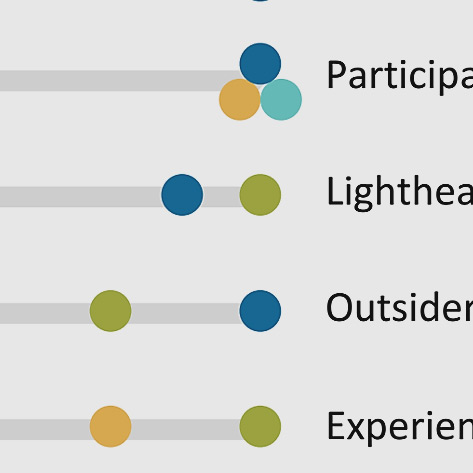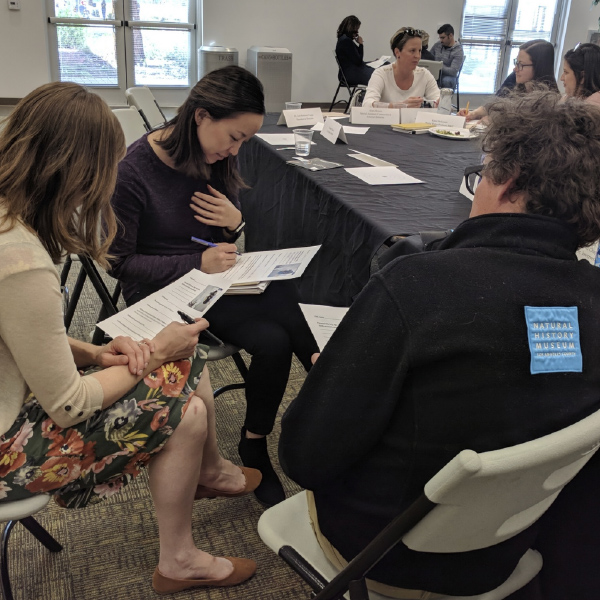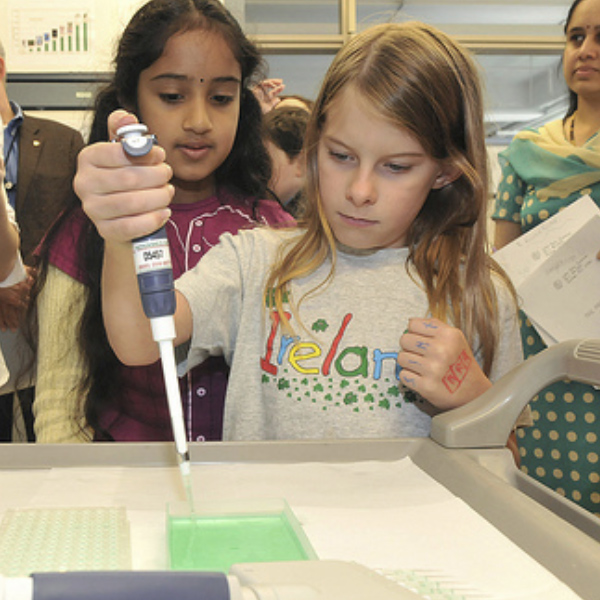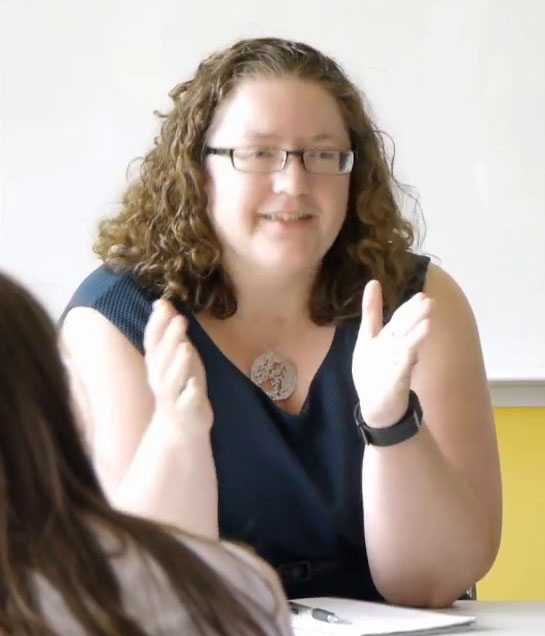What We Do
The short version? We use the tools of research & evaluation to help the cultural sector become more equitable and inclusive. More innovative and successful. More collaborative and way more relevant in their communities.


Rigorous research
We don’t just dabble in research, we have PhDs in it. Because serious social-science methods can help arts & culture innovators move forward.
Co-creation with communities
Research means more than asking questions. At its best, it means tapping into the creativity of the community, turning audiences into collaborators.


Social Impact
Cultural engagement can and must drive social change and civic progress—including progress toward full equity and inclusion. Our research helps you think about ends, not just means.
Thought-partnership
Handing you a report is only part of the picture. The rest is a strategic collaboration about your goals, vision, and challenges…and a little pushing when necessary, to help you get past old assumptions.

I love having the privilege of working with clients across the country, grappling together with how to authentically engage our communities as the cultural landscape continues to evolve. The learning flows both ways–it’s an amazing partnership.”
Want the longer version?
Explore the grid below to see how our research enables more confident, creative, and successful decision-making in areas such as…
Diversity, equity & inclusion
Big question: How can we make culture itself (from the arts to science communication, museums to philanthropy) more equitable and inclusive in a time of seismic demographic and social change? Even bigger question: How can we leverage culture to make our communities more equitable and inclusive, our society more empathetic and interconnected? Our research illuminates both levels, bringing diverse audiences and communities into the conversation about needs, values, and identity. Our work supports progressive change-makers who are advancing EDI and redefining “excellence” with new participants and new purposes. (And no, that doesn’t push away existing audiences and supporters—it can reinvigorate their connection and bring new meaning and energy to the experience.)
Experience design & programming innovation
Our research is the “R” in “R&D,” the fuel in the engine of innovation. Cultural producers of all kinds, from history museums to dance companies to science festivals, increasingly realize they’re in the business of experience design. Good research & evaluation can make that design more human-centered, more creative, and more successful. Our early-stage work with audiences generates the principles that will lead to relevance and excitement. Our prototyping and observational studies help refine the plans and enhance the experience. And our assessment research gauges impact and reveals further possibilities. Throughout, we work closely with artistic, curatorial, programming, and exhibits teams as well as marketing, education, and other departments.
Marketing strategy & branding
Lots of firms conduct market research for cultural nonprofits: surveys, focus groups, and interviews to gauge perceptions, identify barriers, test marketing messages, and shape or evaluate overall brand strategy. But few know how to connect that inquiry to what really brings people in the door in the first place: the experience you offer. We go deep into the questions of value, identity, and experiential preferences that actually drive attendance, spending, and support. Over hundreds of studies with cultural consumers, we’ve developed a keen understanding of what motivates engagement and how expectations and assumptions are morphing in the 21st century.
Audience identification & targeting
“Who’s our current audience? And who could or should be our audience?” We help answer questions about audience growth and definition every day, often using segmentation to reveal distinct attitudinal and behavioral “types” within the full potential audience. Using a mix of quantitative surveys, qualitative exploration, and database analysis, we paint a detailed picture of current and potential participants, including underrepresented communities. Some of our favorite studies in this area have been supported by grants from major foundations, as part of national programs designed to help cultural organizations discover what it would take to bring new audiences into the tent—without weakening their connection to current loyalists.
Pricing & revenue strategy
Earned revenue is increasingly crucial to cultural organizations, and increasingly tied to complex questions about price, value, relevance, packaging, and cultural tourism. Our research explores perceptions of value and helps pinpoint pricing strategies that maximize both revenue and engagement. In areas as diverse as museum admissions, symphony subscriptions, and membership program benefits, we use advanced statistical tools like conjoint analysis to discover cultural consumers’ ideal blend of price, policies, and experiential elements. Our studies inform ticketing, packaging, and retail decisions, revenue forecasting, feasibility studies, and other areas on the “business side” of the arts & culture sector. Because even nonprofits have to think rigorously and creatively in the financial realm.
Membership, subscription & loyalty
Our research has helped some of America’s most renowned museums and arts organizations upgrade their membership and subscription programs, leading to stronger revenue, greater loyalty, and more active attendance. In the performing arts, we’ve seen how important flexibility and “self-curation” are to audiences—and how to look at subscription and single-ticket sales as an integrated, dynamic system. In museums, we’ve learned that visitors want membership to help them have more rewarding connections while they’re at the museum, both with each other and with the exhibition content. We use generative and co-creative techniques to reveal audiences’ needs and hopes for their relationship with the organization, then quantify the optimal package of benefits, policies, and price-levels through conjoint analysis and other survey tools.
Digital engagement
Many of our clients feel strongly about the value of a live, embodied, collective experience (e.g., of music, science, visual art, theater, dance, or storytelling). We agree! But they also know that digital and virtual experiences are legitimate forms of consumption and participation too. Our research illuminates the distinct—and rapidly evolving—needs and expectations of digital audiences and helps leaders create fresh, compelling online content strategies. Often, our studies examine the relationship between digital consumption and live attendance, allowing you to see and manage the whole cycle of engagement—and the full online audience around the country and the world.
Social impact & outcomes evaluation
Museums, the arts, and other forms of culture are valuable both in themselves and because of what they do—how they change individuals and communities, create public value, and help meet shared challenges. Our research supports both kinds of value-creation by, first, revealing the needs and opportunities in our communities and, second, measuring progress toward those goals. We help our clients create theory-of-change models, develop metrics of success, create evaluation frameworks, and bring community members into the conversation about what’s improving and what still needs work. We believe in outcomes evaluation—as long as the user or audience member helps decide what the relevant outcomes are.
Community engagement
Cultural authority used to be pretty unidirectional: The curators, science experts, artistic directors, and programmers decided what their audiences needed to experience, then gave it to them. Working with communities was the job of education and “outreach” staff. Today, though, the most successful and innovative cultural organizations are the ones that realize their communities are their collaborators, and that engagement is a two-way street. Slover Linett’s research informs, evaluates, and strengthens community programs, helping generate new ways of thinking, working, and programming not just for but with the intended audiences and participants.
Creative placemaking
Cultural organizations have always played a key role in the creation of vibrant neighborhoods and economies. But the creative placemaking movement has put artists and creative community enterprises at the table in exciting new ways, making them equal partners with the public, commercial, and social sectors in community development and shining light on the creative and cultural assets that support sustainable, equitable, and healthy places. Slover Linett is part of the conversation about the role of research and evaluation in creative placemaking, where measuring outcomes is famously difficult because so many factors and entities are involved. We’ve even coined a related phrase—”science placemaking”—to describe efforts in the STEM field to help revitalize challenged neighborhoods through new facilities and programs.
Strategic planning
When is strategic planning more than a formal, predictable process capped off by feel-good generalities and “insider” aspirations? When it’s informed by good audience and community research, the kind that brings new perspectives and in-depth analysis into the conversation. We partner with organizational leaders, board members, and their strategic planning consultants to design research studies that feed into—or test and help refine—strategic planning principles, vision statements, master plans, and other course-setting documents. We also conduct the research called for in strategic plans, for example when an organization wants to serve a new community or offer a new experience. We’re passionate about making cultural planning processes not just more creative, but more outward and collaborative.
Collective impact & civic collaboration
No cultural organization is an island, and the hopes and intended impact of today’s museums, arts organizations, and other cultural enterprises can’t be achieved alone. That’s why successful cultural leaders think of their peers as collaborators, not competitors. Slover Linett has helped both formal consortia and loose collaborations of arts & culture organizations understand participation and perceptions at an aggregate, ecosystem level—and gauge whether they’re accomplishing things together that none of them could alone. In research projects with local and national cohorts of foundation grantees, citywide festivals, and discipline-specific initiatives, we use a collective impact lens to examine the dynamics and outcomes of cultural partnerships.
Facilities planning
Nothing captures the attention of cultural leaders, trustees, and staff members like a new building. But nothing is quite as fraught or complex, either, or as capable of creating lasting, sometimes unintended consequences for the organization and its audiences. Our research provides a strong, deep foundation for facilities planning, informing the work of architects, exhibit and interior designers, and feasibility and economics consultants. Our studies have shaped go/no-go decisions, renovation and expansion plans, and the launch, programming, and marketing of new spaces for culture. As with almost everything we do, this work is about bringing the intended audience and community into the process early and often—identifying their needs and tapping into their creativity to maximize relevance and exceed expectations.
Capacity-building & organizational change
We’re not organizational development consultants, but we’ve learned in the course of our work that there’s a deep connection between the “inside” and “outside” of cultural organizations: Changing the composition of the audience or participant base almost always requires changing the internal culture. (Our multi-year partnership with the Irvine Foundation and its arts grantees in California has centered on this very idea.) So we’ve developed ways of defining and tracking audience and organizational change in tandem, which helps cultural innovators see the full, evolving picture. And we frequently provide capacity-building workshops, trainings, and coaching in all areas of research and evaluation, so our clients internalize both the skills and the culture of audience empathy, analysis and responsiveness.
